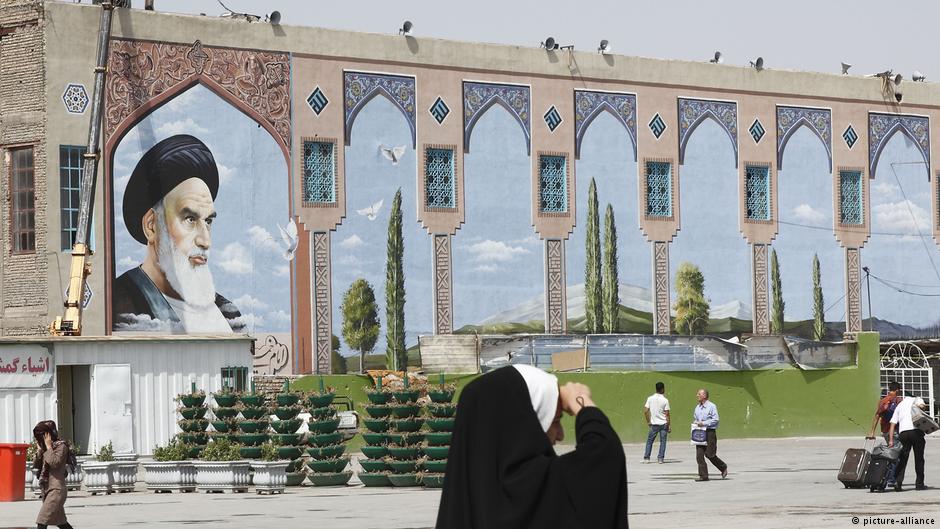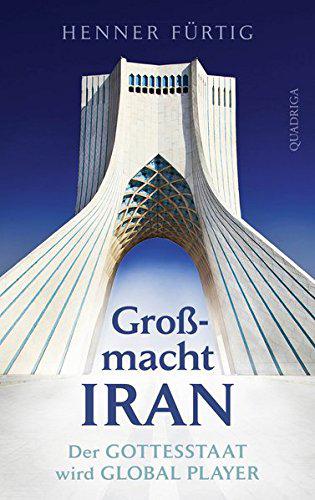Through Realpolitik-tinted glasses

"The key to peace in Europe lies in Tehran. Without Iran, it will be impossible to stop IS, hold back the flood of refugees or solve the endless conflict in the Middle East", says the blurb on the cover of Henner Fürtig's latest book.
The basis of Fürtig's theories is the nuclear agreement with the USA. He believes that the agreement unchained a major power whose influence and significance had until that point been kept in check by international sanctions. According to the Middle East expert, this historic deal, the first real rapprochement between Iran and the West since the 1979 revolution, shows that the time has come to take "a fresh look at this multifaceted and often misunderstood country."
With this in mind, Fürtig shuns the path of a conventional negative portrayal and moral-political criticism of the regime, opting instead for a sober and careful description of the status quo and analysis of the Islamic Republic's history, its system of government, social and economic structure, and its foreign-policy interests and relationships.

Iran: a giant rediscovers its strength
Starting with Cyrus II, he first devotes a few pages to describing the long history of the Persian dynasties up to the Islamic Revolution of 1979 in order to explain why Iran continues to view itself as a major power.
As illuminating as a glimpse into Persian-Iranian history can be, it is a tall order to present it in a readable way in the space of 50 pages. With an average of five years being addressed on every page, the first chapters of the book read like extracts from an historical lexicon. Because of the descriptive, factual nature of these passages, Fürtig avoids adopting an analytical or judgemental position at this point.
The main section of the book begins with an in-depth look at the Iranian Revolution. Fürtig gives a detailed historical description of the life of Khomeini and the key players of his era. He delves into the Ayatollah's revolutionary philosophy and his vision of an equitable theocracy.
Khomeini: the man and the legend
Although Fürtig sticks with his factual, descriptive lexicon style, he cannot rate the significance of Khomeini highly enough, writing: "Compared with the 12 imams, Khomeini even has the additional advantage of having been successful: he triumphed at the end of his tale of suffering and led one of the few genuine social revolutions of the modern era."

The Middle-East expert also praises Khomeini's "great strategic farsightedness" and "political leadership qualities", saying that he wanted to create a system of "seamless controls on each side" in the "most innovative experiment of Islamic state-creation".
Although Fürtig gives a careful and nuanced description of the political structures and power relations in Iran's religiously legitimised system of government since 1979, he only mentions human rights violations and the repression of any political opposition in passing, which is largely attributable to his tendency to view things from the Realpolitik perspective.
This tendency means that he neglects a number of other issues, including the situation for Iranian women following the revolution. For example, he devotes one sentence to the substantial restrictions of women's rights, yet a few pages later paints a detailed picture of the relatively good situation they enjoy in the employment and education sectors.
This pattern continues throughout the book: for example, Fürtig juxtaposes the "extremely unfavourable" situation for the opposition, the "right to vote [which is] generally considered of great importance" and education policy, on which the Iranian government spends almost 22 per cent of its budget.
Fürtig paints a picture of a stable major power, the imminent collapse of which he describes as mere "political wishful thinking".
His analysis places the Islamic Revolution alongside the French Revolution and the Russian Revolution, and makes the "revolutionary sense of mission" into a theme that runs through his argumentation. Revolutions of this type and magnitude trigger specific patterns of behaviour and dynamics in politics and society, he says, which make them particularly resistant to threats from both within and without.
Reconciled with the political system?
It therefore comes as no surprise that towards the end of the book, Fürtig writes: "In the summer of 2015, it seemed in any case as though the crisis of 2009 had been overcome and the majority of the population was now reconciled (again) to the system of the Islamic Republic, or had at least come to terms with it".
His appraisal follows a quote from the Iranian daily paper "Shargh", describing the spirit of optimism in Iranian society following the signing of the nuclear agreement. Although the paper is seen as reform-oriented and although, according to Fürtig, some Iranian print media is "surprisingly lively" despite censorship in the country, the credibility of this description is very limited. Iran is still ranked 165th out of 180 countries in Reporters Without Borders' press freedom index. Journalists who criticise the regime risk political persecution and long prison sentences.
A glance at the number of Iranians who have come to Europe since the 2015 "refugee crisis" doesn't exactly present an image of contented citizens either. In terms of numbers, they are the fourth most populous group after Syrians, Afghans and Iraqis. Unfortunately, their reasons for leaving are not mentioned in Fürtig's analysis.
Miriam Abdollahi
© Qantara.de
Translated from the German by Ruth Martin